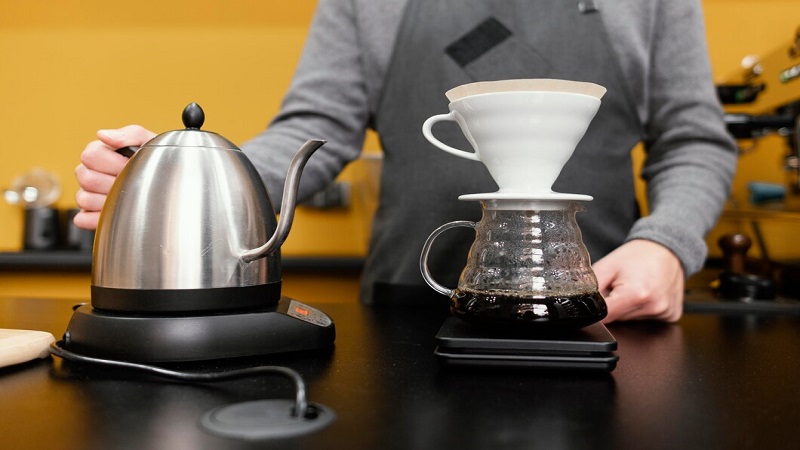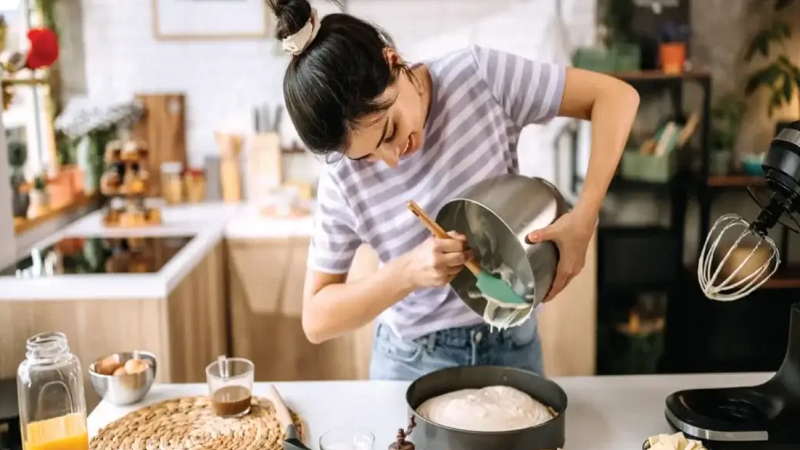Cooking and baking are arts that require precision, and one of the most common challenges people face is converting measurements. Whether you’re following a recipe from another country or simply trying to measure ingredients correctly, understanding conversions is essential. One of the most frequent conversions needed is between grams and cups. This article will serve as your complete guide to using a Grams to Cups Converter effectively.
Understanding the Importance of Accurate Measurements in Cooking
Cooking is both an art and a science. While creativity is encouraged, precision in measurements ensures that your dishes turn out perfectly every time. If you’ve ever baked a cake and found it too dry or cooked a dish that didn’t taste right, the culprit might have been incorrect measurements. The key to consistent results lies in accurate measurement. An accurate Grams to Cups Converter can be a game-changer, particularly when dealing with recipes that use different measurement systems.
What is a Grams to Cups Converter?
A Grams to Cups Converter is a tool that helps convert measurements from grams, a unit of weight, to cups, a unit of volume. This is especially useful when dealing with ingredients like flour, sugar, or liquids, where precise measurements are critical for the success of your dish. When a recipe calls for 200 grams of flour, but your measuring cups are all you have, the converter saves the day by providing an equivalent volume measurement.
Why Do We Need a Grams to Cups Converter?
Different countries use different measurement systems, and many recipes require converting grams to cups. For instance, in the United States, ingredients are often measured in cups, while in Europe, grams are more commonly used. This creates a challenge when following international recipes. A Grams to Cups Converter helps bridge this gap, ensuring you get the right amounts no matter which system your recipe follows. Whether you are making a classic American apple pie or trying your hand at a French baguette, knowing how to convert measurements is crucial.
The Science Behind Grams and Cups
Grams measure mass, while cups measure volume. This difference is crucial because the weight-to-volume ratio can vary depending on the ingredient. For example, one cup of flour does not weigh the same as one cup of sugar. Flour is lighter and less dense, so it takes up more space. Sugar, on the other hand, is denser and heavier. Using a Grams to Cups Converter helps to make these adjustments accurately. The science behind this conversion lies in understanding the density of the ingredient being measured.
How to Use a Grams to Cups Converter
Using a Grams to Cups Converter is simple, but it requires understanding the specific ingredient you’re working with. Different ingredients have different densities, so the conversion will vary. Here’s a step-by-step guide:
- Identify the Ingredient: The first step is to identify what ingredient you’re converting. This is because every ingredient has a different conversion factor. For example, flour and sugar have different densities, so the same weight will convert to a different volume.
- Find the Conversion Factor: Use a reliable converter or chart that provides the conversion factor for that specific ingredient. These factors are based on the ingredient’s density and ensure accurate results.
- Perform the Conversion: Multiply the number of grams by the conversion factor to get the equivalent in cups. Some online converters allow you to input the weight in grams, and it will instantly calculate the equivalent volume in cups for you.
Common Conversion Factors for Popular Ingredients
Different ingredients have different conversion factors, which are based on their density. Here are some common ones:
- Flour: 1 cup = 120 grams
Flour is light and fluffy, so it takes up more space compared to other ingredients. - Sugar: 1 cup = 200 grams
Sugar is denser and heavier than flour, so the same volume weighs more. - Butter: 1 cup = 227 grams
Butter is solid and dense, and its weight reflects that in the conversion.
These conversion factors are essential for using a Grams to Cups Converter accurately. Always ensure that you’re using the correct factor for the ingredient you’re working with.

The Role of Ingredient Density in Conversions
The density of an ingredient affects how it converts from grams to cups. For example, 100 grams of flour will occupy more space than 100 grams of sugar. This is why a Grams to Cups Converter must account for density to provide accurate measurements. The density difference is particularly evident when dealing with light and fluffy ingredients like flour versus heavy ingredients like honey.
Liquid Ingredients and the Grams to Cups Converter
Converting liquid ingredients can be tricky because their densities are different from solids. Unlike dry ingredients, liquids have a more straightforward conversion because their volume-to-weight ratio is more consistent. For example:
- Water: 1 cup = 240 grams
Water has a consistent density, making it easier to convert. - Milk: 1 cup = 245 grams
Milk is slightly denser than water due to its fat content. - Oil: 1 cup = 220 grams
Oil is less dense than water and milk, which is reflected in its conversion.
Understanding these differences is crucial when using a Grams to Cups Converter for liquids. Be mindful that different types of liquids, like oils, syrups, and juices, can have slight variations in density.
Tools to Make Conversion Easier
There are various tools available to help with conversions:
- Online Converters: Many websites offer free Grams to Cups Converter tools where you can input the weight and get the volume instantly. These are particularly handy when you’re in the middle of cooking and need a quick conversion.
- Kitchen Scales: A digital kitchen scale that shows grams can be paired with a conversion chart for more accuracy. This tool is invaluable for those who prefer precision and want to ensure their measurements are spot on.
- Measuring Cups: Having a set of measuring cups can simplify the process, especially when paired with a Grams to Cups Converter. You can measure the converted amount directly, reducing the chance of error.
The Benefits of Using a Grams to Cups Converter
Using a Grams to Cups Converter offers several benefits:
- Accuracy: Ensures precise measurements for better cooking outcomes. Precision is particularly important in baking, where even slight deviations can alter the final product.
- Convenience: Saves time when converting between systems. Instead of manually calculating conversions, you can use a tool to do it for you.
- Versatility: Can be used for a wide range of ingredients, both solid and liquid. Whether you’re measuring dry flour or liquid milk, a converter adapts to different needs.
Common Mistakes to Avoid When Converting Grams to Cups
Even with a Grams to Cups Converter, mistakes can happen. Here are some common pitfalls:
- Ignoring Ingredient Density: Not accounting for the density of the ingredient can lead to inaccurate measurements. For example, converting 100 grams of flour and 100 grams of sugar using the same factor would result in incorrect amounts.
- Rounding Errors: Be careful with rounding; even small errors can affect the outcome of your recipe. Always aim for precision, especially in baking.
- Using Incorrect Tools: Always use proper measuring cups and spoons for accuracy. Eyeballing measurements or using the wrong tools can lead to inconsistent results.

Tips for Accurate Conversions
- Always Level Your Cups: When measuring dry ingredients, ensure that the top is level with the cup to avoid overpacking. Overfilled cups can throw off your measurements and affect the final dish.
- Use a Kitchen Scale: For ultimate precision, weigh your ingredients even after converting to cups. This step ensures that your conversions are accurate and your recipes turn out as expected.
- Double-Check Conversion Factors: Different sources may provide slightly different factors, so it’s good practice to verify. Consistency in measurements is key to achieving reliable results.
How to Convert Back from Cups to Grams
If you find yourself needing to convert from cups back to grams, the process is simple. You’ll use the inverse of the conversion factor. For example, if 1 cup of flour equals 120 grams, then 1 gram of flour equals 1/120 of a cup. This can be helpful when scaling recipes or converting measurements for specific dietary needs.
Grams to Cups Converter for Specific Diets
People following specific diets, such as low-carb or gluten-free, often need to convert recipes. A Grams to Cups Converter can be particularly helpful when adapting recipes to meet dietary requirements. For example, if you’re substituting almond flour for wheat flour, you’ll need to know the conversion to ensure the recipe still works.
Why You Should Double-Check Your Conversions
Even the best converters can make mistakes. It’s always a good idea to double-check your conversions, especially if you’re trying out a new recipe or ingredient. Cross-referencing with another source or using a kitchen scale for verification can prevent mishaps in the kitchen.
When to Use Volume vs. Weight
In some cases, it’s better to measure by weight rather than volume, especially in baking, where precision is crucial. Flour, for example, can settle and compress, leading to inconsistent measurements if done by volume. Weighing ingredients in grams ensures consistency and accuracy.
Conclusion: Mastering the Grams to Cups Converter
Using a Grams to Cups Converter is an essential skill for any home cook or baker. Whether you’re working with a recipe from another country or just trying to ensure precision in your cooking, this tool is invaluable. By understanding the science behind measurements, using the right tools, and avoiding common mistakes, you can elevate your cooking to a new level of accuracy and success. So, next time you’re in the kitchen, don’t hesitate to
FAQs
Q1: Can I use a Grams to Cups Converter for all ingredients?
Yes, but be sure to consider the specific density of each ingredient for accurate conversions.
Q2: How do I convert liquids using a Grams to Cups Converter?
Liquid conversions vary by density, so always check specific conversion factors for accuracy.
Q3: What is the most common mistake when using a Grams to Cups Converter?
Not accounting for ingredient density is the most common error.
Q4: Can I rely on online Grams to Cups Converters?
Yes, but it always good practice to double-check the conversion factors provided.
Q5: Do I need different converters for dry and liquid ingredients?
While the same converter can work, understanding the different conversion factors for dry and liquid ingredients is essential.
